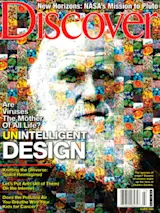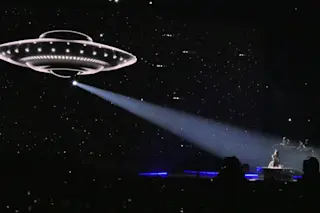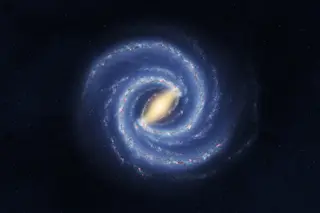On a Thursday night in Ithaca, New York, Daina Taimina, an ebullient blond mathematician at Cornell University, sits at her kitchen table with her husband, David Henderson, a Cornell professor of geometry. In front of her sits a big Chinese bowl filled with crinkled forms made of gray, blue, red, and purple yarn. Reaching into the bowl, Taimina pulls out a woozy multicolored surface, the likes of which would have delighted Dr. Seuss.
"This is an octagon with a 45 degree angle at every juncture," she explains, displaying a familiar eight-sided shape outlined in white on the curvilinear surface of the wool. "And when you put it together," she continues, folding the material together so that the opposite corners of the octagon touch, "you get this." Just as the ends of a flat piece of paper can be joined to form a cylinder, so the ends of Taimina's woolly octagon ...














